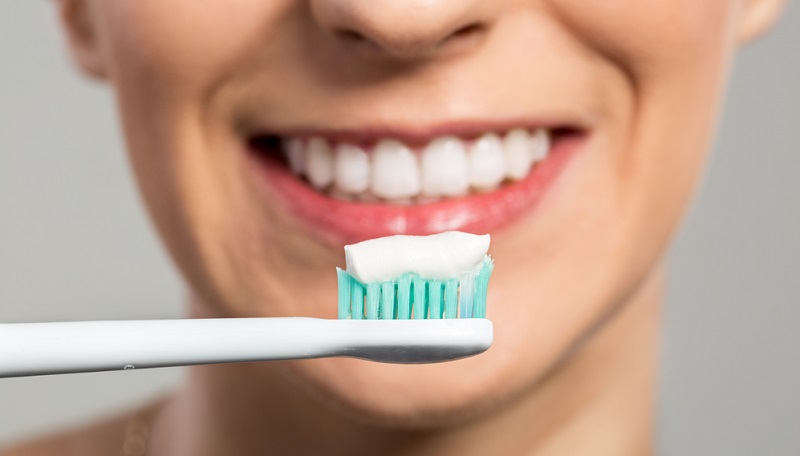What is the Best Toothpaste for Bleeding Gums?
Contents
Did you know using a specific toothpaste can help to reduce your chances of acquiring gum diseases?
Gum disease is caused by the presence of dangerous bacteria in plaque and tartar. This sticky substance builds up between the teeth and eats away at the gums.
Tender, swollen, or bleeding gums are symptoms of gum disease. Some people, particularly the elderly, are more susceptible to gum disease than others. Gum disease may run in your family.
Gum inflammation begins with gingivitis and can escalate to periodontitis, an infection that can spread throughout the body and cause a breakdown of oral connective tissue and bone, resulting in tooth loss.

However, regardless of your age or heredity, the toothpaste you use can play an important part in preventing gum infections.
In fact, toothpaste can be one of your most effective anti-gingivitis weapons. Good gum disease toothpaste is capable of killing the microorganisms that cause plaque, which can harden into tartar.
Let us find out more about the role of toothpaste in preventing gum diseases.
Which Toothpaste is Good for Bleeding Gums?
This toothpaste combats plaque, the leading cause of bleeding gums, by dissolving it and destroying plaque bacteria. This aids in the prevention of gingivitis, which can result in bleeding gums.
It also helps to strengthen teeth and keep the barrier between gums and teeth tight, hence reducing the risk of gum disease.
Brush your teeth with parodontax fluoride toothpaste every day to help protect your gums, prevent cavities, and keep your breath fresh.
Can Toothpaste Cause Bleeding Gums?
Toothpaste combats plaque, the leading cause of bleeding gums, by dissolving it and destroying plaque bacteria. This aids in the prevention of gingivitis, which can result in bleeding gums.
It also helps to strengthen teeth and keep the barrier between gums and teeth tight, hence reducing the risk of gum disease.
Can Sensodyne Toothpaste Stop Bleeding from Gums?
Sensodyne Sensitivity & Gum toothpaste is a dual-action toothpaste that is specifically intended to aid people who have both sensitivity and gum problems.
Sensodyne Sensitivity & Gum is a low-abrasion solution that is specially designed to reduce tooth sensitivity while also improving gum health.
It forms a protective barrier over sensitive areas while targeting and eliminating plaque bacteria to help decrease swollen, bleeding gums. You can control both of these troubling issues with a single specialised toothpaste.
Can Change Toothpaste Cause Bleeding Gums?
It has been observed that changing toothpaste can potentially cause bleeding gums in some individuals, although it is not a common occurrence.
Several factors could contribute to this reaction. The making of toothpaste consists of various factors which can cause reactions, but not for everyone. It might differ from person to person.
Let's see these factors:
1. Roughening agent:
Some toothpaste brands may contain hard and rough components, such as certain forms of silica, which can be rough on the gums and cause inflammation.
This inflammation can cause bleeding gums, especially if you have sensitive gum tissue or clean your teeth forcefully.
2. Allergies:
Some people are allergic to certain components in toothpaste, such as fluoride, mint, or other additives. Gum inflammation, redness, and bleeding are all symptoms of allergic reactions.
3. Imbalance of Chemicals:
The mouth environment is delicately balanced, and changing toothpaste can upset this balance. Different toothpaste formulas may change the pH level in your mouth or introduce new chemicals that can irritate your gums and cause bleeding.
4. Gum Sensitivity:
Some people are prone to sensitive gums, which can be triggered by any change in dental care products, including toothpaste.
How To Brush Teeth With Bleeding Gums?
It is critical to use the proper brushing technique. Whatever toothpaste you use, using the proper brushing regimen and technique is critical for preventing gum infections.
Brush your teeth for at least two minutes twice a day.
At 45 degrees, angle the brush towards the gum line.
In a circular motion, move the brush back and forth.
Cover all surfaces of each tooth, including the front, rear, and biting edge.
Brush the gum line to remove food particles.
Remember to wash your teeth.
Make use of a brush with delicate bristles.
Replace your manual toothbrush every three months or when the bristles grow ragged.
Replace the head of your electric toothbrush every three months.
Request Recommendations for Good Toothpaste!
Changing toothpaste is a simple treatment that can work wonders for sensitive teeth or generalized oral pain caused by an allergy.
The best toothpaste for you will be determined by your individual dental needs, flavour preferences, and how your mouth reacts to different substances.
Contact the dentist today to ask for ideas on which toothpaste you should try next, or visit the nearest dental clinic.
Conclusion
Although using a specific toothpaste might help prevent gum disease, you should be on the lookout for any signs of gingivitis.
Gum disease symptoms include, in addition to swollen or bleeding gums, gum recession, loose teeth, pus between your teeth and gums, mouth sores, and poor odour.
If you detect any of these symptoms, make an appointment with your dentist straight once. If you have gingivitis in its early stages, early treatment can keep it from progressing to periodontitis or severe periodontitis, which may necessitate surgery.


